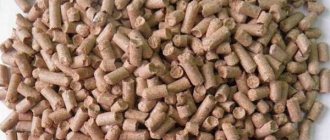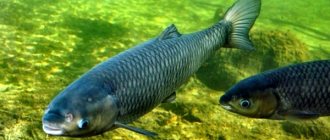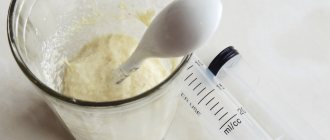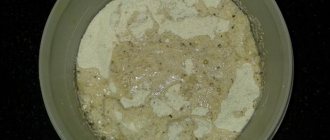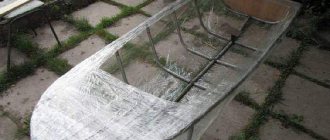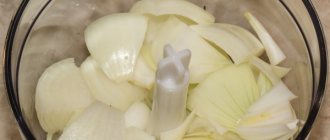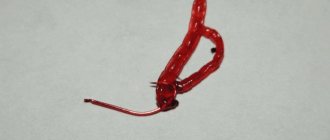Ichthyophthiriasis is a disease that many aquarists call semolina. The name comes from the tubercles that form on the body of a sick fish. These tubercles are similar in appearance to semolina, but much smaller. The causative agent of the disease is the ciliate ichthyophthirius multifiliis belonging to the class Ciliata. It has an oval body, in front of it there is a mouth surrounded by cilia. Cilia also surround the entire body of the ciliate. Thanks to them she moves.
Reproduction of ciliates occurs by division. As soon as the trophonts mature, the pustule ruptures in the epithelium of the aquarium fish and comes out. After this, it sinks to the bottom and attaches to the ground, stones, plants, and decor. Next, a cyst is formed, inside which the process of division begins.
During the division of one trophont, about 2000 daughter parasites appear. They break the shell and swim in the water, looking for a new victim. If the young ciliate does not settle on the fish for several days, it dies. Parasites that find a new victim are located in the gills and the upper layer of the epithelium. There they grow. When they reach maturity, they leave the fish and the cycle repeats again.
The growth of equal-ciliated ciliates is influenced by the following parameters:
- The comfortable temperature for their development is 25 degrees.
- Low water temperature increases the time of cyst formation and the time to search for prey.
- Poor lighting increases the lifespan of young cells.
- At a water temperature of 30 degrees and above, ciliates die within 5 hours.
Pets who have suffered from ichthyophthyriasis acquire immunity. If the disease recurs, the fish will survive.
How does infection occur?
All fish, without exception, are susceptible to semolina disease. But most often the disease spreads in tanks where there is an overpopulation of fish.
Ciliates can get into an aquarium in several ways:
- From a reservoir along with a planted plant, along with soil, driftwood and water. To prevent this, everything caught from a reservoir must be processed.
- With live food.
- When relocating plants and fish from another aquarium, for example when buying new pets.
Cooking methods
There are many recipes for this plant bait. They are all quite simple, time-tested, and work well. You can prepare semolina as a topping:
- in the form of a mixture of semolina and water, without heat treatment (mash);
- dough consisting entirely of semolina or with the addition of additional components that increase the viscosity of the nozzle;
- in the form of porridge, by boiling in water;
- boilies.
Semolina chatter
A chatterbox or chatterbox is a very catchy, universal attachment for catching white fish in various ways.
This is a kind of rubber decoy for fishing, the preparation of which will take about half an hour. You can prepare the mash as follows:
- In a suitable sized container: a jar, plate or mug, pour in cereal (about half a glass), fill it with water one to one;
- We wait 5 minutes until the cereal is saturated with water and swells a little. Stir the mixture and place it in several layers of folded gauze. Wrinkle the future bait in gauze under clean, cool tap water. The process may take 20-30 minutes, you need to achieve the consistency of soft rubber;
- When the white rubber-like mixture becomes homogeneous (the thread should break when stretched by 6-7 cm). Roll the resulting dough into a ball or place it in a syringe. It is most convenient to use a syringe with a volume of 5-10 cubic meters.
Advice. It is very difficult to draw a rather thick “dish” through the narrow neck of the syringe. Therefore, it is easier to temporarily remove its moving part (piston) and place the loose part through the freed large hole. This can be done with your fingers, gradually pushing the dough, but it is easier by suction through a narrow neck.
Semolina dough
The dough making process is partially similar to the method described above, but has differences.
It will take less time to knead; the bait does not need to be brought to a rubber state. The nozzle is also based on two main components - semolina and water. Various additives will help diversify the taste, aroma and consistency:
- wheat or corn flour;
- ground rolled oats;
- sugar;
- honey;
- vanilla;
- anise drops;
- hemp;
- coriander;
- any flavorings suitable for catching white fish.
Semolina dough does not stay on the hook as long as chatter dough; it has a different task. Once in the water, small particles begin to fall off with a trail of fragrant turbidity. In addition to attracting fish, the bait makes it easy to fish without bait, which often attracts schools of small fish.
Semolina dough can be quickly made in the field or at home. When fishing, the simplest versions of this bait are most often prepared, consisting of cereal, water and flavoring.
Coca Cola soda can be used as an unusual attractant. This drink contains a sufficient amount of sugar with flavor enhancers. The soda is simply added to the water before mixing.
Boyles
The bait also works on any white fish, mainly large ones, used when fishing from the bottom.
Preparation:
- A very small amount of water, literally a tablespoon, is brought to a boil.
- Add the same spoonful of semolina to boiling water and turn off the heat.
- Mix the hot mixture very thoroughly.
- As it cools, knead the mixture with your hands until it reaches the consistency of plasticine.
- A signal of readiness will be the fact that the plasticine has stopped sticking to your hands. At this stage you can add flavoring.
- The next stage is to form balls of the required size, from four millimeters for a small fish. Up to one or two centimeters in diameter for catching trophy specimens. Then we take a needle and use it to place the balls on a thread folded in half (for strength) at a distance of 5-6 cm from each other. We leave future boilies to dry hanging in a convenient dry place.
Recommended reading: How to plant bloodworms
After drying, cut the thread in the middle between the balls and tie the tails with a double strong knot. We put them in jars, where the baits are sorted by size, smell and color.
Semolina Mastyrka
Mastyrka is a bait with the consistency of thick dough.
This attachment usually has a medium viscosity, so it can be placed approximately between the semolina and the dough. Making mastyrka is noticeably different from the two methods already described. Preparing mastyrka involves boiling.
The main ingredients for cooking are peas, semolina, and water. Using boiled peas significantly changes the taste, smell, and color of the bait. Although various white fish respond well to this mastyrka, most of all it attracts large bream, which is very partial to peas.
On a note! To speed up the preparation of mastyrka a little, you can cook semolina in the microwave.
Contrary to popular belief among fishermen, mastyrka can be prepared not only from peas. In general, this name means any bait with the consistency of thick dough. If semolina remains an unchanged component, then other suitable products can be used instead of peas. Here are some common recipes.
With peas
Place a glass of peas in a metal bowl, fill it with water above the level of the peas, and put it on the fire. Cook over low heat, stirring constantly (so as not to burn), add water if necessary. Cook until a thick puree forms, add a spoonful of vegetable oil. While stirring, add half a glass (100 grams) of semolina and turn off the stove, leaving it to rise as it cools.
Once the mass has cooled completely, you need to rinse it well with your hands and the mastyrka can be considered ready. You can cook semolina with the addition of a small amount of boiled pearl barley or wheat to enhance the smell.
Advice . Mastyrka with peas can be slightly flavored with vanilla, however, it is very important not to overdo it with the smells.
Peas and semolina themselves have an attractive aroma that the fish can smell very well. Vanilla or other aromatics should be present only as a light spice.
With potatoes
Take boiled potatoes, rye bread and cut into small pieces. Pour a glass of pre-cooked chilled corn or oatmeal porridge. Grind this mixture in a mixer, meat grinder, or simply mash it by hand. The output should be a homogeneous thick mass. For flavor, it is advisable to add a tablespoon of sunflower oil, then mix thoroughly.
Mastyrka with sunflower seeds. A glass of sunflower seeds without peel, add dry cookies (100 grams) and pour boiling water. And also stir until a homogeneous mass is obtained.
From semolina and corn
Mix a glass of semolina with two glasses of corn grits. Pour water into a small saucepan and bring to a boil. Pour the prepared mixture into boiling water, add 3 teaspoons of sugar. Cook over low heat for 15 - 20 minutes, stirring constantly until a thick mass forms. Let it cool, knead it a little with your hands and put it in a plastic bag. You can knead a pinch of vanilla sugar into the finished mastyrka.
Recommended reading: Potatoes for carp
Ichthyophthyriosis: symptoms and diagnosis
Pets suffer from semolina for about 2 weeks. If left untreated, all inhabitants die. The fry die on the 8th day. Livebearers and girardinuses are the least likely to suffer from ichthyophthyriosis.
As soon as the ciliates have entered the gill covers and the upper layer of the epithelium, the following symptoms appear in the fish:
- Anxiety.
- Pets begin to rub against plants and algae.
- They try to swim in the area of bubbles coming from aeration.
- When trophonts form, white tubercles become noticeable on the body of the fish.
- The pet often rises to the surface and swallows air.
At the last stage of semolina, the inhabitants of the aquarium do not react to external stimuli and refuse to eat. Sometimes during illness the corneas of the eyes are affected, which leads to blindness. When ichthyophthirius multifiliis leaves the body of an aquarium inhabitant, it breaks the capillaries. Because of this, blood clots appear on the body, gas exchange in the fish’s body is disrupted, the body is poisoned by the waste products of the parasites, and the pet’s death soon occurs.
Symptoms and causes of the disease
If white dots appear on the surface of the body of fish in an aquarium, this is the main symptom of the emerging disease. Initially, the spots appear in small quantities, then every day the white dots become more and more numerous. The white dots on the fish are no larger than a grain of semolina. Ichthyophthyriosis in fish is developed by the bacteria ciliates Ichthyophthirius entering the aquarium along with food, soil and water. Bacteria attach to the scales of fish. The semolina on the fish are not actually white spots, but tubercles through which the parasites come out.
Symptoms of the disease:
- restless behavior;
- fish rub their bodies against objects, plants and soil;
- when internal organs are damaged, pets become passive to external stimuli, their appetite disappears, they are often on the surface of the aquarium, swallowing air;
- when the cornea of the eye is damaged, blindness develops;
- the color of the scales and body fades;
- the scales are covered with a white coating.
Without immediate action, the inhabitants of the aquarium may die as a result of lack of oxygen and damage to the epithelium of a large area.
The most frequently affected species are viviparous individuals. This bacterium is harmless to humans.
Causes of fish infection with semolina:
- live food, it is especially difficult to remove parasites from plants brought from tropical places;
- the appearance of new fish in the aquarium;
- dirty soil;
- as a result of poor quality and irregular cleaning of the aquarium: the deposits on the walls should be cleaned, the filter should be washed;
- cold water;
- temperature changes in the aquarium;
- stress.
At the initial stage of infection, before the appearance of tubercles, Ichthyophthirius (another name for the disease) cannot be seen with the naked eye.
How to treat semolina in fish
Before you begin treating semolina in fish, you should understand some of the characteristics of the parasite. In the body of the fish, the ciliate hides under the upper layer of the epithelium. Medicines can only overcome parasites that have escaped into the external environment. In no case should you exceed the dose of the drug, as this may negatively affect the condition of the fish. Equal ciliates react poorly to increases in water temperature. The first signs of semolina appear a few days after the parasite has entered the victim’s body.
Symptoms
Due to its size, it is impossible to detect the parasite with the naked eye. However, at one stage of its life it becomes noticeable thanks to those same white dots, reminiscent of grains of salt or semolina, from which the disease got its name.
The presence of small white bumps is the main sign of Ichthyophthyriasis. The more there are, the stronger the infection.
Secondary symptoms include: itching, which causes the fish to want to rub against decorations; if the gills are damaged, breathing may be difficult; in severe cases, loss of appetite occurs, exhaustion begins, and the fish becomes inactive.
It is important to pay attention to the color of the dots. If they are yellow or golden, then it is probably another disease - Velvet disease.
Preparations for the treatment of semolina:
Universal products:
- A solution of malachite green will quickly relieve the fish from the disease. Used in the form of baths.
- Sera Omnisan. Omnisan copes with the disease only in the early stages. Not suitable for stingrays, sharks, crayfish and shrimp.
- Sera Mycopur. Micopur is a conditioner against fungi (Saprolegnia), fungal diseases, skin and gill worms.
- The combination of drugs Omnisan + Mycopur acts on all forms of tropical ichthyophthyriosis.
Specialized products:
- AVZ Antipar. Treatment with this drug is carried out in a general aquarium, it is safe for vegetation, and has a wide spectrum of action.
- Aquayer Ichthyophthiricide - malachite green, does not contain formaldehyde, it is recommended to carry out treatment in a separate container.
- Sera Costapur - universal, for several types of skin parasites, not suitable for invertebrates.
- Rikka Ichthyocide - against all ichthyoparasites (Ichtyophthirius, Ichtyobodo (Costia), Heteropolatia, Chilodonella, Tetrahymena, Trichodina, Glossatella in fresh water, Cryptocarion, Brooklynella, Uronema in sea water), not suitable for catfish.
- Tropical CMF - against bacteria and fungi with a broad spectrum of action.
- For advanced cases, JBL Punktol ULTRA is suitable.
Medicines from our first aid kit
Some aquarists do not specifically buy medicine for “semolina” for fish, but use what they already have on hand. These are antibiotics and some other drugs. In first place is the drug "Furazolidone". It is used in the proportion of 1 tablet per 10 liters of water. This is an antimicrobial drug that can also help in the fight against ciliates. Treatment should be continued until symptoms disappear completely.
Very often, to solve this problem, a penicillin antibiotic called Bicillin-5 is used. This is a broad-spectrum antibiotic that frees fish from pathogens and ensures recovery. True, in this case the larvae, which are lying on the bottom at the time of treatment, will remain alive, which means that you can soon expect a new outbreak of the disease. It should be borne in mind that any antibiotic greatly reduces immunity. That is, you should resort to this remedy only if it is not possible to get a more effective drug.
Prevention of semolina in fish
To disinfect the aquarium, the inhabitants are transplanted into another container for 8-14 days. And where there was an outbreak of semolina, they raise the temperature to 29-30 degrees. If special preparations were used to treat semolina in fish, then the water is purified with a carbon filter.
To prevent the disease from starting again, some precautions should be taken. All new inhabitants and plants must undergo quarantine. The fact is that a newly acquired fish may already be infected, but the symptoms of the disease are not yet noticeable. After placing it in a community aquarium, semolina can begin to develop very quickly.
New fish should sit in a quarantine tank for 10-14 days. If nothing happened to the new pet during this time, then it can be placed in a common tank.
Types of baits
You can make not one, but several different baits from semolina. They need to be used depending on the type of fish that the fisherman wants to catch. Crucian carp, for example, with all its capriciousness and unpredictability, is very fond of chatterbox, so you definitely need to know how to prepare this type of bait.
Chatterbox
The chatterbox is a favorite bait of many fishermen. The basic mash recipe requires several steps.
- Pour 50 grams of semolina into a glass bowl - this is about half a glass;
- The cereal needs to be filled with water. Water must be of high quality, free from impurities and foreign odors. Boiled, mineral and tap water cannot be used. Filtered will do. You can also buy a canteen in the store.
- Water should cover the cereal by 3-8 mm.
- The mixture of cereal and water should be mixed with a spoon and set aside for about 20 minutes, during which time the semolina should absorb water and swell.
- After 20 minutes, you need to start stirring the semolina. This needs to be done for a long time and actively. Quite quickly, the semolina will change its consistency, it will become viscous and begin to form sticky threads.
- You need to stir the mixture for 15-20 minutes.
- The mash should be quite thick. If the thread breaks immediately, you should add more semolina to the mixture.
- For convenience, the mash can be transferred into a syringe. To do this, use a regular medical syringe without a needle. You need to remove the piston from it, and put the mixture into the syringe itself with a spoon. After this, the plunger is placed back into the syringe.
- You can store the mash in the freezer or refrigerator. It is recommended to pack the bait in a sealed bag so that it does not absorb refrigerator odors.
- While fishing, the mixture is squeezed out of a syringe and wound onto a hook.
The threads of the chatterbox can quickly be carried away by the current, so it is better to use the bait in reservoirs with standing water. Crucian carp, roach, bream, etc. peck on the chatterbox.
The basic recipe can be improved if you use a few simple recommendations:
- you can fill the semolina with honey instead of ordinary water; 0.5-1 teaspoon of honey will be enough;
- while shaking, it is recommended to add one finely chopped or pressed clove of garlic;
- if the mash will be cooked right during fishing, then it is better to take water directly from the reservoir;
- when preparing mash, you can add a small amount of ordinary cotton wool, torn into small pieces, to the mixture - the mixture will become stronger and will stick better to the hook;
- threads of chatter slowly dissolve in water, thereby attracting fish; in cloudy water, you can use a bowl of food coloring: red, blue, yellow or green.
Mastyrka
Another popular type of semolina bait. Mastyrka has a denser consistency, so it holds well on the hook even in places with strong currents.
A simple mastyrka recipe involves using semolina and water.
- Water must be poured into a saucepan and brought to a boil.
- Pour semolina into boiling water in a thin stream, while stirring the mixture continuously.
- You need to keep the mastyrka on the fire until it thickens and acquires a uniform texture.
- After turning off the heat, you need to stir the porridge for a while, then cover it with a warm towel or blanket and let it swell for another half hour.
- The mixture needs to be cooled and then kneaded with your hands.
- You need to knead the mastyrka like dough. If the mixture is too liquid, you can add a little semolina.
- To prevent the mastyrka from sticking to your hands (and also to give it a smell), your hands can be moistened with vegetable oil. One that has a strong, distinct odor will work well.
- The finished mastyrka needs to be rolled into balls. This semolina bait will stick well to the hook.
Mastyrka is often prepared from semolina and peas, because the smell of peas attracts fish well.
To prepare mastyrka with peas, you first need to boil the peas. You need to add semolina when there is almost no water left in the pan. At the same time, the peas should not fall apart and turn into puree.
Instead of peas, you can use pea flour. It is very important not to forget to constantly stir the porridge, because if it burns, it will acquire an unpleasant odor, which means the mastyrka will be spoiled.
Add semolina in a thin stream and stir constantly. You need to add semolina until the mass becomes plastic.
You need to cook the mixture until it becomes thick and homogeneous. Sometimes egg yolks are additionally added to the mixture - this makes the bait higher in calories and more attractive to fish.
Mastyrka can be stored for up to three days. It must be packed carefully so that it does not dry out.
Sometimes the mastyrka can slightly change the consistency, so it is recommended to take a little grits when fishing to give the bait the necessary plasticity.
How to put bait on a hook?
If you are using a bolt in a syringe, it is easy to place it on the hook. To do this, the mass must be squeezed out of the syringe by slowly pressing the plunger. The thread is carefully wrapped around the hook and then broken off using a sting.
If the chatterbox is stored in an ordinary container, you can pick it up with an ordinary stick, and then carefully wrap it around the hook.
It is recommended to roll the mastyrka into small balls and place it on a hook.
Cool and washed semolina should be cut into small pieces and placed on a hook in the same way as the previous method.
